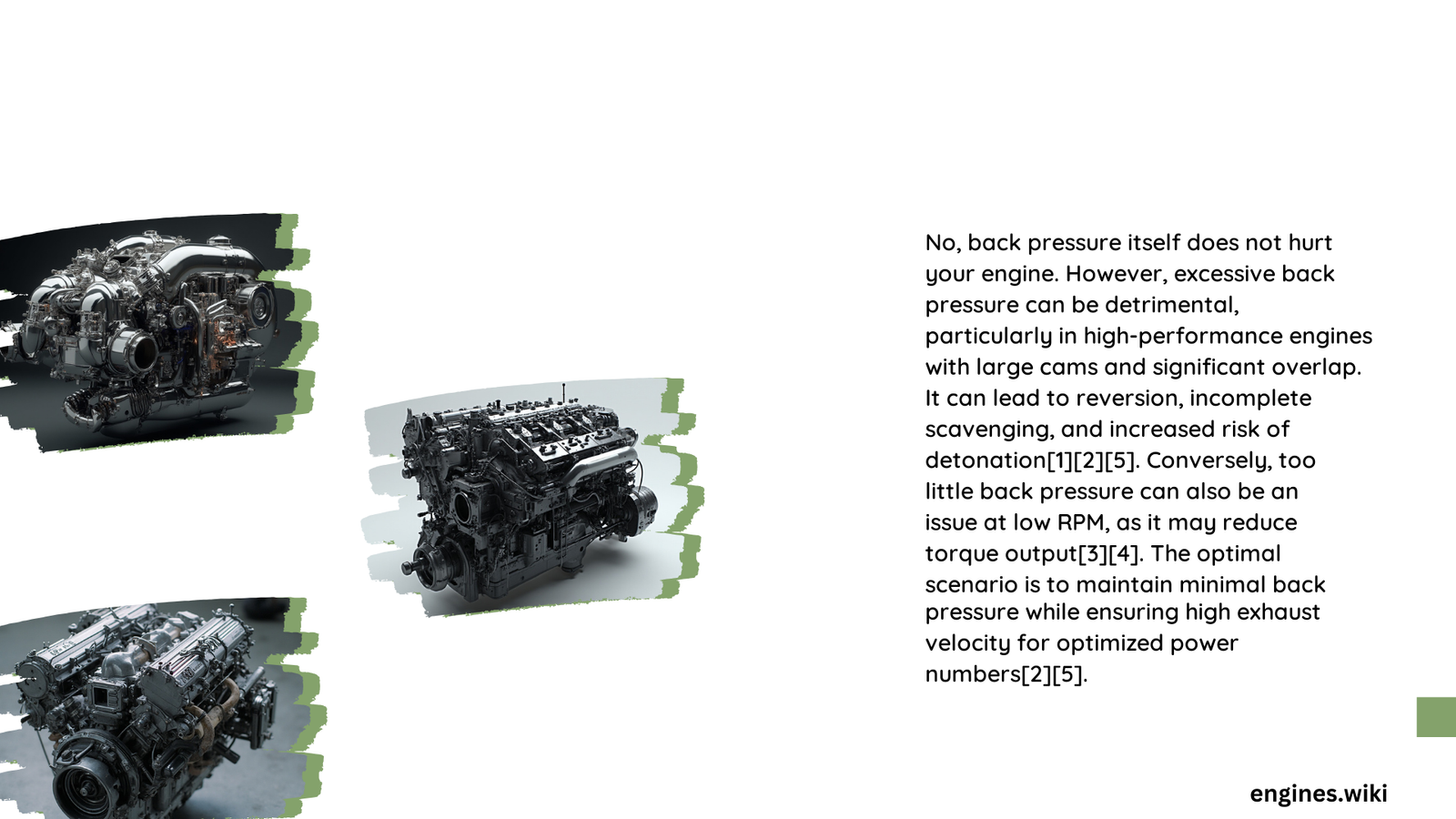Modern automotive engines operate within complex mechanical ecosystems where exhaust back pressure plays a nuanced role in performance and longevity. Vehicle owners and performance enthusiasts frequently question whether eliminating back pressure could potentially damage their engine’s critical components. Understanding the intricate relationship between exhaust flow dynamics and engine health requires a comprehensive examination of technical parameters, potential risks, and performance implications.
What Happens When Back Pressure Disappears?
Back pressure in an exhaust system is not inherently harmful, but complete elimination can trigger several mechanical consequences. The engine’s exhaust dynamics depend on carefully balanced pressure waves and scavenging effects that maintain optimal combustion efficiency.
Key Performance Considerations
| Performance Metric | Impact of No Back Pressure |
|---|---|
| Horsepower | Potential Increase |
| Torque | Possible Enhancement |
| Exhaust Gas Temperature | Higher Variability |
| Engine Breathing | Improved Efficiency |
Will Removing Back Pressure Cause Immediate Engine Damage?
Contrary to popular misconception, removing back pressure does not automatically guarantee engine damage. However, several critical factors determine potential risks:
- Exhaust System Design
- Proper engineering prevents catastrophic failures
- Maintaining exhaust velocity is crucial
-
Professional modifications recommended
-
Engine Type Variations
- Naturally aspirated engines more sensitive
- Turbocharged systems require different considerations
- Performance engines have unique back pressure tolerances
How Does Exhaust Flow Impact Engine Health?
Exhaust flow represents a delicate balance between gas evacuation and maintaining optimal combustion chamber dynamics. Complete elimination of back pressure can potentially:
- Disrupt exhaust gas scavenging mechanisms
- Alter combustion chamber pressure waves
- Potentially increase exhaust valve wear
- Modify fuel-air mixture efficiency
What Are the Potential Long-Term Risks?
While immediate catastrophic damage is unlikely, prolonged operation without proper back pressure management might lead to:
- Accelerated exhaust valve deterioration
- Increased thermal stress on engine components
- Potential reduction in overall engine efficiency
- Compromised emissions control systems
Expert Recommendations for Safe Exhaust Modifications
- Consult professional automotive engineers
- Use high-quality, precision-engineered exhaust components
- Maintain recommended exhaust system specifications
- Monitor engine performance after modifications
- Utilize professional diagnostic equipment
Technical Insights and Precautions

Successful back pressure management requires understanding:
– Exhaust gas dynamics
– Volumetric efficiency principles
– Thermal management strategies
– Specific engine design characteristics
Recommended Action Steps
- Professional exhaust system assessment
- Comprehensive engine diagnostic evaluation
- Gradual performance modifications
- Regular maintenance and monitoring
Conclusion
No back pressure will not automatically hurt your engine if modifications are performed professionally and systematically. The key lies in understanding your specific engine’s requirements and maintaining a balanced approach to exhaust system design.
